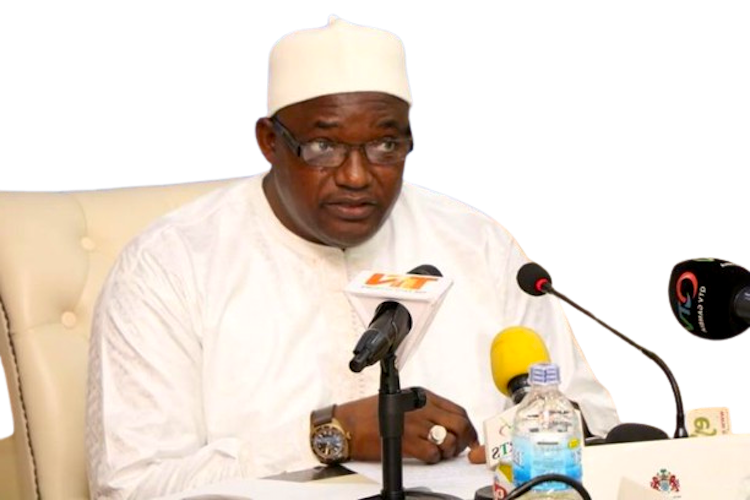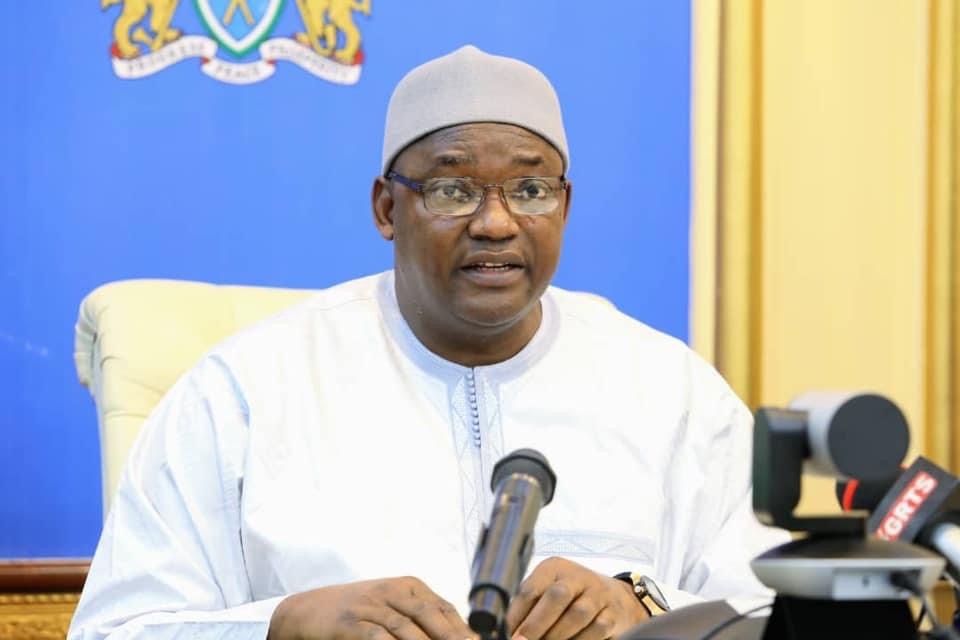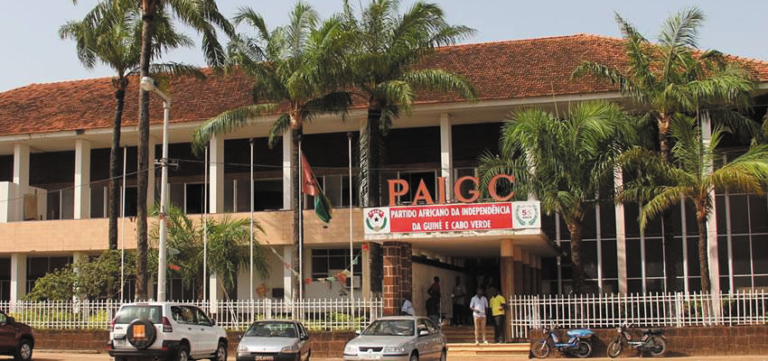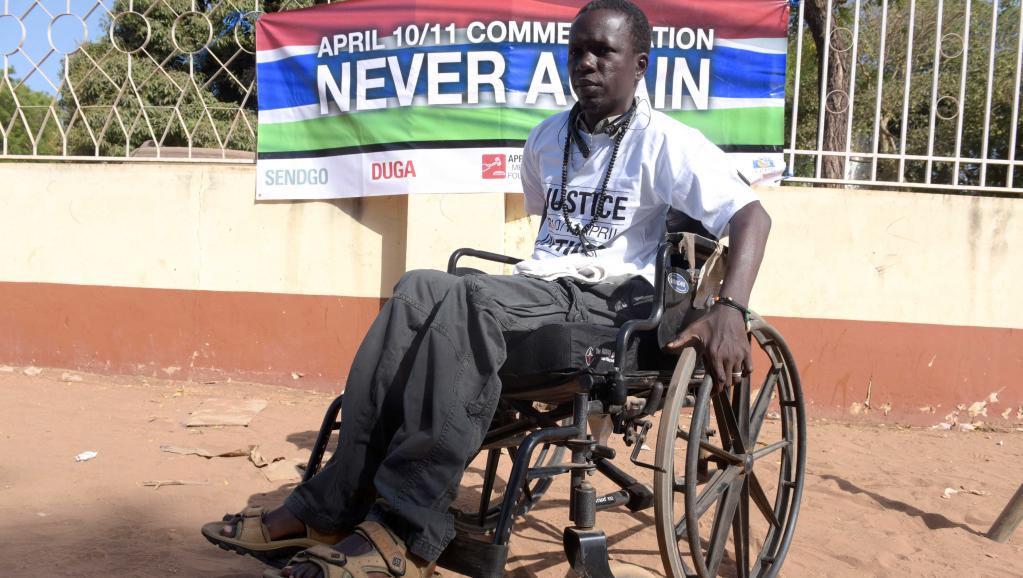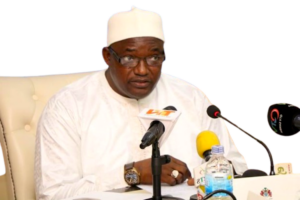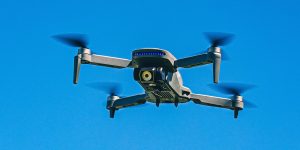Gambiaj.com – (BANJUL, The Gambia) – Today marks the 25th anniversary of one of The Gambia’s darkest chapters—the April 10-11, 2000 student massacre. The two-day protest, which began as a demand for justice over human rights abuses against students, ended in a brutal crackdown that claimed the lives of at least 15 people, including 12 students, a Red Cross volunteer, and two toddlers.
Many more were left with lifelong injuries from gunshot wounds, while others faced arbitrary arrests, torture, and unlawful detentions.
What Led to the Protest?
The events were triggered by two shocking incidents. The first was the death of 19-year-old Ebrima Barry, a student in Brikama, on March 9, 2000. Barry was reportedly tortured by members of the fire department after being called in by a teacher over a disciplinary issue. He was beaten, stripped, forced to swallow cement, and left to return home, where he later succumbed to his injuries.
The second incident involved the alleged rape of a 13-year-old schoolgirl by an armed police officer at a sporting event in early April 2000. The government’s failure to ensure accountability in both cases infuriated the Gambian Students Union (GAMSU), which attempted to stage a peaceful protest. However, the Jammeh administration denied them a permit.
A Peaceful Protest Turned Bloodbath

Undeterred, hundreds of students gathered on April 10 at the gates of the Gambia Technical Training Institute, intending to march peacefully. Security forces, including the Police Intervention Unit (PIU) and the Gambia National Army (GNA), were deployed and ordered to disperse the students.
When they refused, security forces opened fire, attacking with tear gas and rubber bullets. Students scattered but regrouped, creating barricades out of burning tires and throwing stones at the police.
As enraged non-students joined the fray after witnessing the police violence, the combined security forces reacted by using live ammunition, killing 14 students, a Red Cross volunteer/radio journalist, and a three-year-old that was hit by a stray bullet. Police prevented Gambians from entering the local hospital to identify the dead. Hundreds of others were injured.
The following day, as news of the massacre spread, students across The Gambia took to the streets. Security forces once again cracked down violently, making mass arrests and using brutal force to suppress the demonstrations.
The government later falsely claimed that the students were responsible for the violence, alleging they had stolen weapons from police armories and turned them on each other.
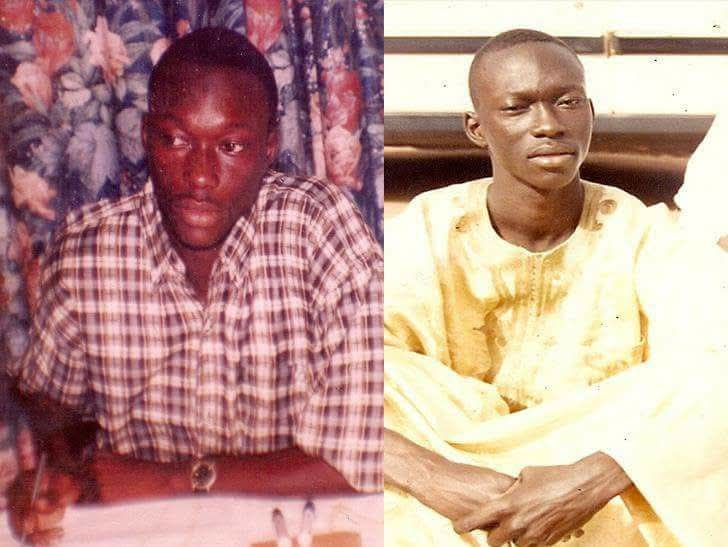
State Cover-Up and Impunity
Despite overwhelming evidence, the Jammeh government refused to hold security forces accountable. A government commission of inquiry, led by Chief Justice Felix Lartey, found that PIU officers were primarily responsible for the shootings.
However, on January 26, 2001, the government rejected the commission’s recommendations, and no one was prosecuted.
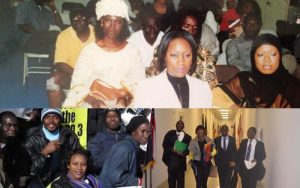
To further cement impunity, on April 18, 2001, Yahya Jammeh’s mechanical APRC majority at the National Assembly passed an Indemnity Bill retroactively covering crimes committed in January 2000. The bill effectively prevented victims’ families from seeking legal redress.
It was widely condemned as unconstitutional, with lawyer Hawa Sisay-Sabally describing it as “tantamount to a coup against the 1997 constitution.”
After the protests faded, GAMSU and other social justice organizations, such as Amnesty International-Gambia, organized a bigger group called the Coalition of Human Rights Defenders to free all arrested student activists and successfully raise awareness about the killing.
However, during the next few years, much of GAMSU’s leadership fled The Gambia to avoid persecution from Jammeh’s regime. The APRC government was eventually able to infiltrate what remained of the GAMSU organization using recruited operatives eager to report their student colleagues to the police and the National Intelligence Agency (NIA).
The radicalized dictatorship also established a sham student organization, the National Patriotic Students Association (NAPSA), which Yahya Jammeh utilized to downplay future GAMSU activities.

The Role of Yahya Jammeh
At the time of the massacre, President Yahya Jammeh was in Cuba, leaving Vice President Dr. Isatou Njie-Saidy in charge. However, testimonies from senior security officials later confirmed that Jammeh personally ordered the violent crackdown. Babucarr Jatta, then Army Chief, later admitted that the security forces acted under Jammeh’s directives. Orders were carried out by the PIU, GNA, and senior officers, including Jai Sowe, Sankung Badjie, and Ousman Badjie, who facilitated the distribution of firearms and live ammunition to police officers.
Seeking Justice and the Path to Accountability
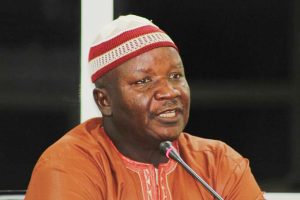
For years, commemoration events for the massacre were banned under Jammeh’s rule. It was only after his ouster in 2017 that the country began reckoning with its past. The Truth, Reconciliation, and Reparations Commission (TRRC) later confirmed that state security forces were responsible for the deaths, injuries, and unlawful detentions.
The TRRC also exposed how state agents attempted to cover up the massacre through false testimonies and fabricated reports.
In response to the TRRC findings, the Gambian government accepted 17 key recommendations, including prosecuting Yahya Jammeh, Isatou Njie-Saidy, Babucarr Jatta, and Ousman Badjie. The government has also pledged to declare April 10 and 11 as school holidays in honor of the victims.
A Lasting Legacy
Twenty-five years later, the memories of the April 10-11 massacre remain deeply etched in the hearts of Gambians. Survivors and families of the victims continue to seek justice and recognition. The anniversary serves as a solemn reminder of the cost of impunity and the importance of accountability in ensuring such tragedies never happen again.
As The Gambia moves forward, the demand for justice remains unwavering. The wounds of April 2000 have not fully healed, but with the commitment to hold those responsible accountable, the country takes a step closer to closure and national reconciliation.
The full list of those killed is as follows.
Reginald Carroll, a student of La Fourmi Institute, died of gunshot wounds.
Karamo Barrow, a former student of the Institute for Continuing Education, died of gunshot wounds.
Lamin Bojang, a student of Nusrat Senior Secondary School, died of gunshot wounds.
Ousman Sabally, a student at Brikamaba Upper Basic School, died of gunshot wounds.
Sainey Nyabally, not mentioned in the Jammeh inquest report
Ousman Sembene, not mentioned in the Jammeh inquest report
Bakary Njie, not mentioned in the Jammeh inquest report
Claesco Pierra, a resident of New Jeshwang, died of gunshot wounds.
Momodou Lamin Njie, a student at Gambia Technical Training Institute, died of gunshot wounds.
Wuyea Foday Mansareh, a student of Tallinding Islamic Institute, died of gunshot wounds.
Bamba Jobarteh, not mentioned in the Jammeh inquest report
Momodou Lamin Chune, a student at Latrikunda Middle School, died of gunshot wounds.
Abdoulie Sanyang, from Old Jeshwang, died from accidental trampling.
Babucarr Badjie, a 10-year-old student, died of gunshot wounds.
Omar Barrow, journalist and Red Cross volunteer, died of gunshot wounds.



